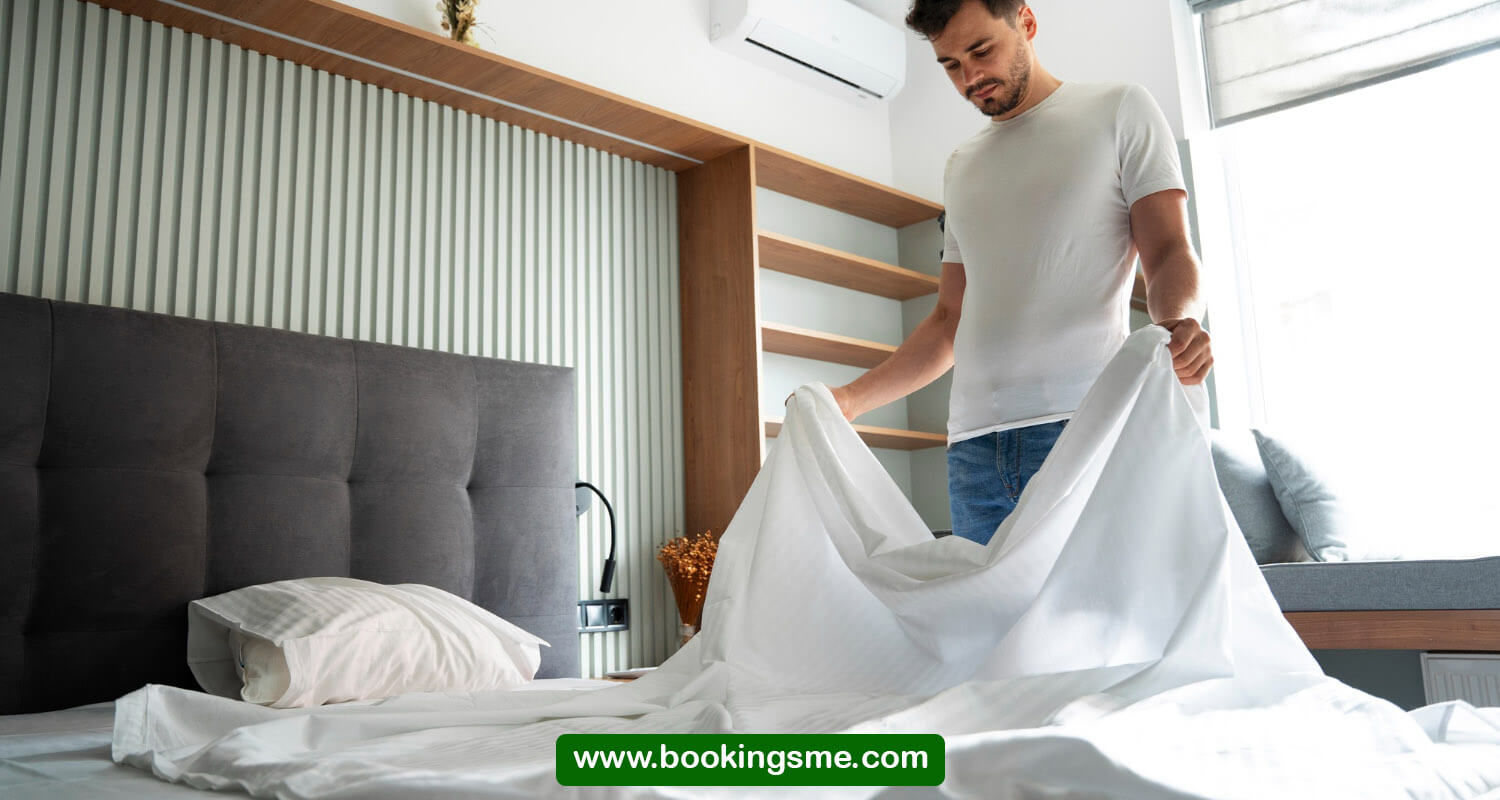When it comes to the realm of hotel accommodations, ensuring a tranquil and restful night’s sleep stands as a paramount objective. Regrettably, the intrusion of bed bugs can transform this desirable experience into a distressing ordeal.
These minuscule, nocturnal nuisances sustain themselves by feasting on the blood of both humans and animals, and they have gained notoriety for clandestinely hitchhiking their way into luggage, apparel, and personal effects. Within this all-encompassing manual, we will delve into effective methodologies on how to inspect for the presence of bed bugs in a hotel, empowering you to shield yourself from potential infestations and relish a stay devoid of apprehension.
Read also: Can You Check Out of a Hotel at 3am
Understanding Bed Bugs:
Before delving into the inspection process, it’s crucial to have a basic understanding of bed bugs. These reddish-brown, flat insects are approximately the size of an apple seed, making them adept at hiding in cracks and crevices. Although they are not recognized for transmitting diseases, their bites can induce itching and discomfort. Bed bugs are highly resilient and can survive for several months without feeding, making early detection essential for effective pest control.
Pre-Check Preparation:
Before entering your hotel room, take a few moments to gather your thoughts and belongings. Place your luggage on a hard surface, preferably in the bathroom, as bed bugs are less likely to infest smooth, non-porous materials. Avoid placing luggage on the bed, upholstered furniture, or carpeted areas, as these are common hiding spots for bed bugs.
Systematic Room Inspection:
To conduct a thorough inspection, follow a systematic approach that covers all potential hiding spots for bed bugs.
- Bed and Bedding: Start by examining the bed and bedding. Lift the sheets and inspect the mattress seams, especially around the edges and corners. Look for small reddish-brown bugs, dark spots (fecal matter), or tiny white eggs. Pay attention to the bed frame, headboard, and any nearby furniture.
- Furniture and Upholstery: Inspect all furniture in the room, including chairs, sofas, and dressers. Focus on seams, folds, and crevices where bed bugs may hide. Use a flashlight to illuminate dark corners, as these pests are nocturnal and tend to stay hidden during daylight hours.
- Wall Hangings and Decor: Bed bugs can also hide behind wall hangings, picture frames, and other decor items. Take a close look at these elements, paying attention to any cracks or crevices where bed bugs might conceal themselves.
- Electrical Outlets and Switch Plates: Bed bugs are skilled at finding tiny hiding spots. Check electrical outlets and switch plates for any signs of infestation. These areas provide dark, secluded spaces that bed bugs find appealing.
- Curtains and Blinds: Examine curtains and blinds, focusing on the folds and seams. Bed bugs may use these areas as harborages, especially if they are close to the bed or other resting spots.
- Luggage Rack: If your hotel room includes a luggage rack, inspect it thoroughly. Bed bugs can easily transfer from luggage to the rack, and vice versa. Check the seams, joints, and any straps where bed bugs might hide.

How to Check for Bed Bugs in a Hotel
Post-Inspection Actions:
After completing the inspection, there are several proactive steps you can take to further minimize the risk of encountering bed bugs during your stay.
- Luggage Storage:
Keep your luggage elevated on the provided luggage rack or in the bathroom. Avoid placing it directly on the bed or carpeted areas. If the room lacks a luggage rack, consider using a hard, smooth surface.
- Personal Belongings:
Be cautious with your personal belongings. Avoid leaving clothes, bags, or other items on upholstered furniture or the bed. Instead, use hangers or designated storage spaces.
- Alert Hotel Staff:
If you discover any signs of bed bugs during your inspection, promptly inform the hotel staff. They should be made aware of the issue to take necessary measures and potentially relocate you to another room.
Read more: Book Hotel Online with Checking Account
Conclusion:
In conclusion, how to check for bed bugs in a hotel, a proactive and systematic approach is key to effectively checking for bed bugs in a hotel. By following the steps outlined in this guide, you can minimize the risk of encountering these unwanted pests and ensure a more enjoyable and stress-free stay. Remember that early detection is crucial in preventing bed bug infestations, so take the time to inspect your hotel room thoroughly before settling in. With these precautions, you can rest easy knowing you’ve taken steps to protect yourself from potential bed bug nuisances during your travels.
What are the signs of a bed bug infestation in a hotel room?
Common signs include small reddish-brown bugs, dark spots (fecal matter), and tiny white eggs. Check mattress seams, furniture seams, and other hiding spots.
Can bed bugs hide in places other than the bed?
Yes, bed bugs can hide in furniture, curtains, wall hangings, electrical outlets, and luggage racks. A thorough inspection of the entire room is essential
How can I protect my luggage from bed bugs in a hotel?
Keep your luggage elevated on a hard surface, preferably on a luggage rack or in the bathroom. Avoid placing it directly on upholstered furniture or the bed.
What should I do if I find signs of bed bugs in my hotel room?
Immediately inform the hotel staff about your findings. They can take appropriate measures, potentially relocating you to another room and addressing the issue.
Can I prevent bed bug infestations during my hotel stay?
Yes, take proactive steps like inspecting the room before settling in, avoiding placing luggage on soft surfaces, and keeping personal belongings off upholstered furniture. Early detection is key to prevention.

